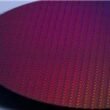Linux Community Revives Support for Older ATI Radeon R300 Graphics Cards
Linux systems have long been champions of older hardware, and a recent development has showcased this commitment: a new driver extension for the ATI Radeon R300 series graphics cards has been officially released. This enhancement not only brings functional improvements for R300 users, but it also supports the X700/X800, R400, and X1000 R500 series graphics cards.
A Glimpse into Graphics History
The ATI X300 series made its debut back in 2002, marking a significant milestone in graphics technology as part of the Radeon 9000 series. Notably, the Radeon 9700 PRO heralded a new era, pushing high-performance desktop-grade graphics technology into the mainstream. While nearly two decades have passed since their initial release, these "vintage" graphics cards continue to receive updates and support, reflecting the dedication of the Linux community.
In contrast, support for the R300 series in Windows systems reached its end back in March 2009. The final driver, Catalyst 9.3, was the last to offer compatibility with these older graphics cards. Subsequent drivers, starting with Catalyst 9.4, shifted their focus exclusively to the Radeon HD 2000 series and newer models, leaving earlier products unsupported.
What’s New in the Latest Driver Upgrade?
With the upcoming release of Mesa 25.3, users of the R300 Gallium3D driver can look forward to two previously unimplemented memory-related OpenGL extensions: GL_ATI_meminfo and GL_NVX_gpu_memory_info. These extensions have been advocated for by independent open-source developer Brais Solla and are set to be integrated into the Mesa code repository (Mesa Git).
The introduction of these features is significant for legacy graphics cards, particularly those with limited memory. Users will gain the ability to query essential information about available graphics memory—including GPU memory and GTT memory—along with total memory capacity. This advancement is particularly crucial for older models that typically feature just 64MB of graphics memory, as accurately monitoring memory usage is vital for optimal performance.
Why This Matters
The release of new drivers for aging hardware illustrates the Linux community’s commitment to inclusivity and support for those using older technology. Many individuals still rely on these legacy graphics cards for various applications, whether it be for gaming, graphic design, or general computing tasks. This support ensures users can continue to utilize their hardware without being forced into costly upgrades.
Moreover, the ongoing development of drivers for outdated technology can help reduce electronic waste, fostering a more sustainable approach to computing. By ensuring that older hardware remains functional, users can extract more value from their investments while minimizing their environmental footprint.
The Road Ahead
The anticipated rollout of Mesa 25.3 and its new features is scheduled for the upcoming quarter, marking a promising advancement for users of the ATI Radeon R300 series and compatible graphics cards. As these newer functionalities become available, they signify not only technical advancement but also a strong message about community support and the longevity of older technological innovations.
In conclusion, the Linux community continues to shine in its efforts to support legacy systems by providing critical updates for older hardware. With the release of these new driver extensions, users of the ATI Radeon R300 graphics cards can look forward to a renewed and improved experience, highlighting the ongoing relevance of this cherished technology.
Conclusion
The spirit of innovation and support within the Linux community exemplifies the potential for older technologies to remain relevant in a rapidly evolving digital landscape. By bridging the gap between legacy systems and modern software capabilities, users can continue to rely on their trusted hardware while benefiting from the latest developments in technology. As we await the official launch of Mesa 25.3 and its exciting features, one thing is clear: the commitment of the Linux community to support older systems is a testament to the enduring legacy of technology and its users.





